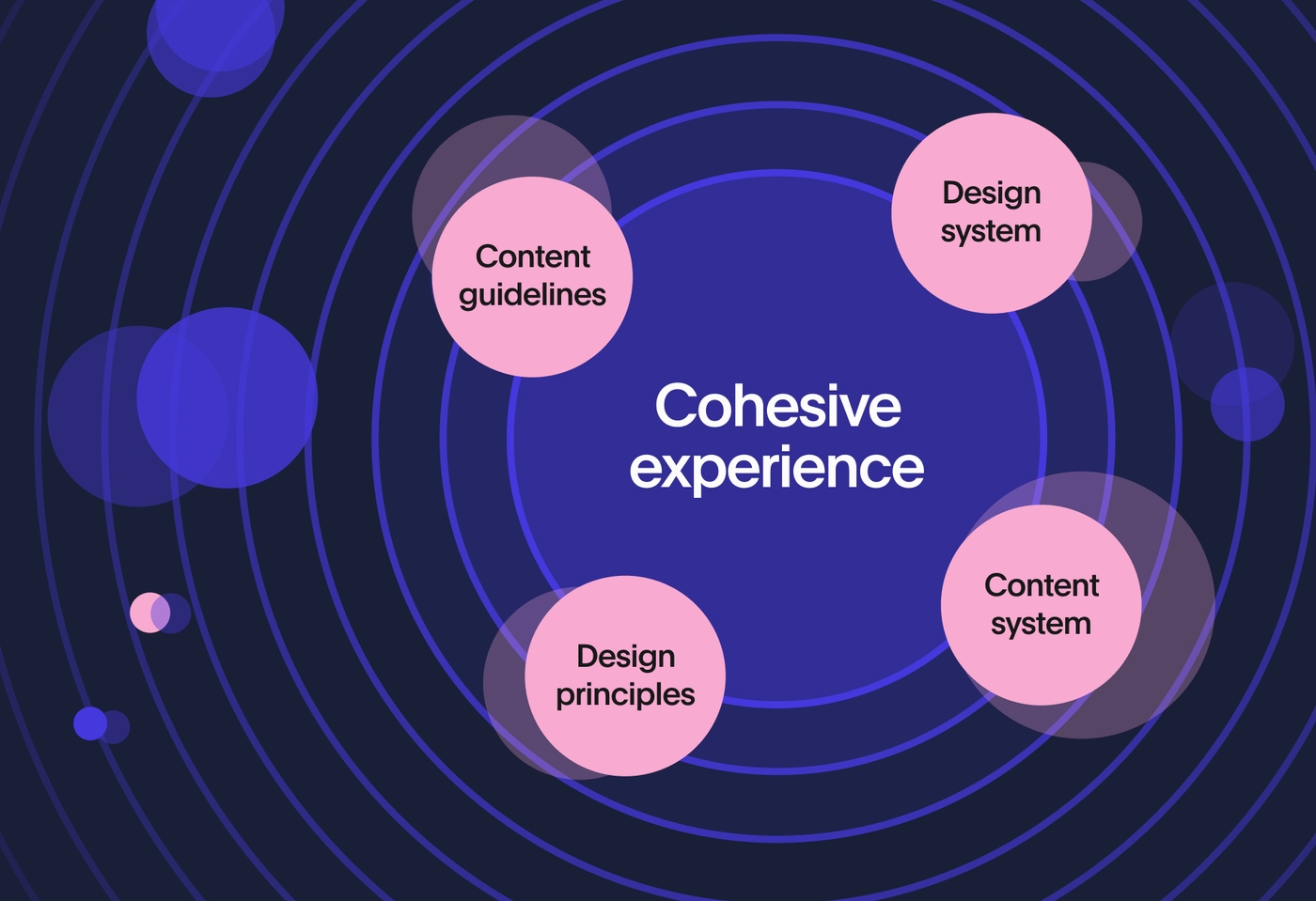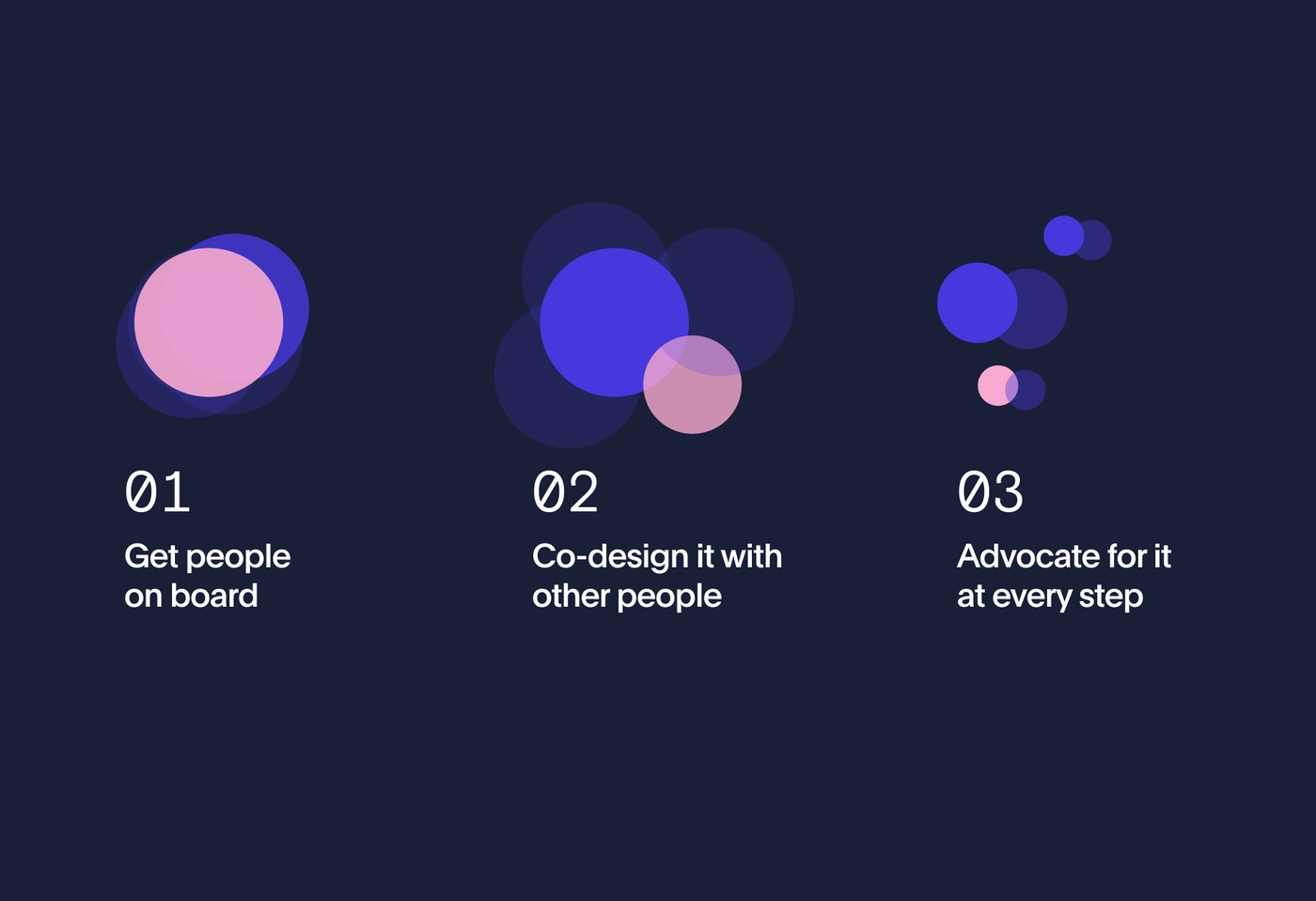Ever found yourself writing something and thinking, ‘I’m sure I’ve written a version of this before.’ It might be a description for a community service, an introduction to a presentation or instructions on how to fill in an application.
Whatever it is, it gives you that annoying, nagging feeling that you’re repeating yourself. Then, if you’re like me, you start to wonder if you said it better the first time.
Wouldn’t it be great if you could just copy and paste that content into whatever you are working on and move on with your day with peace of mind that it was accurate, accessible and consistent.
Well, never fear, content systems are here.
What is a content system?
A content system is essentially a database of commonly used pieces of content that are relevant to an organisation, service or product. It’s also sometimes called a language system, a content framework or a language library.
A content system can be made up of public-facing content like headlines, key messages, service descriptions, quotes, calls to action and definitions.
As well as internal content such as guidelines, glossaries, user personas, presentations, scripts and templates.
All of this content is stored in a catalogued order so that you can browse through and find the piece of content you need for the thing you’re working on.
How are they different from a design system?
A design system and a content system are very similar. Except one deals with the components needed to create consistent design experiences and the other deals with the components needed for consistent content experiences.
While a design system includes things like established page structures, colour palettes and photography direction, a content system includes the content that will be layered on top of those components such as content warnings, service descriptions and call to actions.
As part of a recent branding project with Melbourne-based school Lumineer Academy, we co-designed a content system for the school with school staff and parents. It housed content such as the school tagline, a descriptive narrative about the school’s ethos and their value descriptions. Staff could easily use the content in this system in multiple places, for example on social media or in school brochures. This helped them to bring the school’s new brand alive, provide guidance to staff on consistent messaging and support their tone of voice.

How are they different from a set of content guidelines?
A content system might include some content guidelines to help people to use the content in the content system in the best possible way.
Content guidelines on their own can only guide and direct you on how to write or create content that is fit for purpose. A content system gives you the actual individual pieces of content that you can include in the thing you are creating.
In an ideal world a content system, design system and content guidelines would all live in the same place and work together to enable you to create cohesive and consistent experiences for your audience.
Why are content systems useful?
They help to keep your content consistent
Consistent content is talked about a lot, but is it really that important?
Short answer, yes. Talking about something in the same way every time you refer to it helps everyone. Not just people with low literacy, who are in a hurry or who have English as a second language. It helps to reduce your cognitive load, which basically means it takes you less time to understand and remember something.
It’s important to point out that this isn’t about removing creativity or personalisation from content. There are times when content needs to be tailored to meet specific needs or address specific situations.
A content system just gives you a consistent foundation to work from so that you are using the right language that your audience is familiar with.
They help to increase efficiency and productivity
A content system cuts out that wasted time spent rewriting content you already know exists. For example, it stops you from reinventing the wheel every time you want to explain to your audience what your new legal service can provide to the community.
A content system can also make publishing content faster. Things like social media or email campaigns can be built out using content from a content system so that you can react to fast moving situations or problems at a quicker pace.
They help to save money
When you have a content system it hopefully means that you and your team can spend less time producing the everyday content and more time working on more meaningful and impactful content strategies that can help your organisation to achieve it’s bigger goals.
For example, those bigger goals might include addressing knotty content problems that are causing people to call your helpline in confusion. And hey, once you’ve solved that problem you can add it to your content system so that it’s thought about next time you design something new.
They help to reduce the risk of harming your audience
For some organisations the way you say something can mean the difference between happiness and hardship. It can mean the difference between someone getting help with their mental health, finding support after a bushfire or fully understanding the process of separating from their partner - as we have learned from across many of our recent projects with government departments and not for profits working in these spaces.
For example, having a content system with a glossary of definitions in it means that you are working from a set of agreed upon terms – that you’ve hopefully also tested with your community – that you know won’t trigger, alienate or harm your audience.
When is a content system useful?
- In content-rich organisations to help you store, manage and update content all in one place.
- In cross-discipline teams when you are collaborating together and design and content elements need to feel cohesive.
- In organisations when what you say exists in multiple different places, for example on social media, on a website, in person and in print.
- In situations where you need to provide accurate and useful content to audiences quickly in order for them to feel empowered or safe.
How to create a content system (and get people to actually use it)?
Creating a content system is no easy task. It takes commitment, care and time. But it’s also important to remember that it’s okay to create a first version of a content system and then expand it from there.
You don’t need to create some fancy online system that has every piece of content you will ever need. Instead you can start small in a shared spreadsheet that catalogues your most crucial or consistent content.
There are a lot of steps to creating a content system in an organisation and getting people to actually use it. But the overall process can be summed up in 3 stages.

01. Get people on board
Frame why you think a content system is important for the organisation, product or service. Go beyond it just being a useful thing to do that can help the content teams. Think about the bigger organisation goals and how it will ultimately help your audiences.
02. Co-design it with other people
In order for a content system to be successful it needs to be designed with other people. After all, a good content system is one that can be used by multiple teams in an organisation, not just those responsible for creating content.
Consider getting a diverse range of roles involved in the co-design process. Such as leadership people responsible for communicating broad strategic messages, developers responsible for uploading or maintaining digital content and even front line or community liaison staff who need to be able to share or direct people to the right information.
Co-design activities like card sorting and content mapping can help you to decide on a structure for your system and how to categorise and tag the content that lives in the system.
Don’t forget to also test your content system with the people who will be using it to spot friction points or missed opportunities. Bonus points if you also test the content you put into the system with your audiences to make sure that it is the most accessible and useful that it can be.
03. Advocate for it at every step
Congratulations you have a content system! But just because you created it doesn’t necessarily mean it will be used. You need to be ready to advocate for the content system at every opportunity, whether it’s when you’re working with design, development or marketing teams.
Show its value by tying it to people’s individual goals such as learning how to design better content and the organisation’s goals such as reducing the number of complaints you get.
Content systems need content strategy to succeed
Putting all the content you use together in one place and hoping it will solve your content problems is wishful thinking. A successful content system needs to be built on a clear content strategy for your organisation, product or service.
Before you create a content system you need a content strategy that sets out things like the purpose, approach, processes and tone of voice for your content.
If you need help with your content strategy, or with creating a content system. Or, if you just want to learn a bit more about what kinds of problems we think content-thinking can solve, get in touch with us.